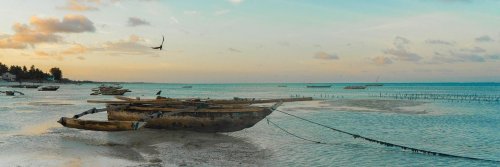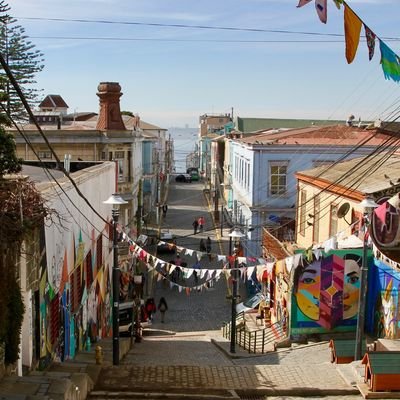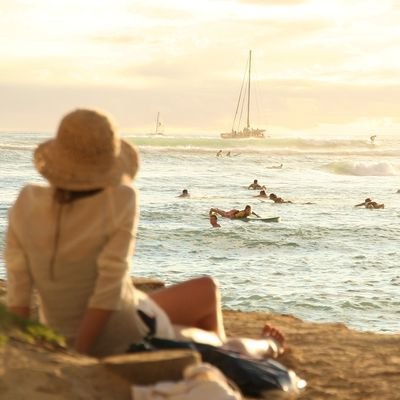Ever dream about being marooned on a palm-fringed island with, of course, 5-star amenities at your disposal—say Ibiza or the Maldives? Such fantasies may fill daydreams of gorgeous sandy shores to swan along and quaint bamboo beach shack bars for evening cocktails. Of course, you don't want the scenario depicted in the movie Castaways; talking to volleyball 'Wilson' or spearing your own dinner and cooking it after you have mastered the art of making fire.
Quite a few islands just don't make the grade as indulgent get-aways and should never be put on a bucket list of must-go-to places. Below are some of these islands of nightmares, not dreams, despite their tempting appearances:
An Ophidiophobiac's Purgatory - Ilha da Queimada Island, Brazil
The mysterious and uninhabited Ilha da Queimada Island sitting in pristine waters off Brazil's coastline is one of the most untouched islands in the world, and for a good reason. Nicknamed 'Snake Island,' its ground is literally smothered in one of the most venomous snakes to be found globally, the Golden Lansehead. Ilha da Queimada Island has over 4,000 of these slithering vipers. Their bite can melt human flesh, cause kidney failure, intestinal bleeding, and brain hemorrhaging within an hour. For those who suffer from ophidiophobia (fear of snakes), the very thought of stepping onto this island would induce; a few trembles, heart palpitations, and profuse sweating. Unfortunately, wildlife smugglers are more tempted by the black market price ($10,000 to $30,000 per specimen) than the fear of being bitten. As a result, lanceheads are actually on the critically endangered list.
No Surfing or Swimming in the ocean - Reunion Island, Indian Ocean
A tiny pearl in the ocean east of Madagascar, multi-cultural Reunion Island is a unique paradise and home to the largest French city that isn't located in France. On the island, entire villages sit in large volcano craters draped with rainforest and stunning waterfalls cascading down rugged cliff faces. Previously a hiking hotspot, the iconic volcano of Piton de la Fournaise has had over 150 eruptions, with the last being in April 2021. Fringed by stunning coral reefs and beautiful sandy beaches, you are safe if you stay on land, swim in one designated coral lagoon, or your hotel's swimming pool. Unfortunately, the island's surrounding waters are so infested with sharks that swimming and surfing are banned. It has the highest number of shark attacks in the world, with most of the deadly swimming culprits being bull sharks that live in both fresh and saltwater. These huge predators cruise not only the waters of Reunion Island but the oceans of Brazil, Australia, France, and Florida. They can even be found some 3,700km up the Amazon River.
A Forbidden Island with Unfriendly Locals - North Sentinel Island, India
North Sentinel belongs to the Andaman Islands group in the Bay of Bengal. Inhabited by the indigenous people known as Sentinelese for more than 50,000 years, they have had virtually no contact with the outside world. Surrounded by pristine aqua water hiding spectacular coral reefs washing white sandy beaches, the island is blanketed in mangroves. The locals of North Sentinel Island will not greet you with big smiles, cool fluffy white hand towels, floral leis, or cocktails when you step onto their island. Instead, spears plus bows and arrows carried by virtually naked men will be your welcoming party. If you are lucky, you will get away. If not, you will end up buried somewhere in the sand like the 27-year old American adventure-blogger who inveigled fishermen to illegally take him for a trekking foray on the island in 2018.

Not for Phasmophobiacs - Poveglia Island, Italy
This is not the place for those with an intense phobia about ghosts. Such as when the very talk of a ghost brings on severe anxiety, panic attacks, and thoughts of impending doom. Poveglia Island off the coast of Venice has such a gruesome past that it's nicknamed 'Island of Ghosts.' Said to be the most haunted island globally, from 1776 for more than 100 years, the island was a quarantine station for victims of plagues (pneumonic, bubonic, and septicemic). Then it morphed into a mental asylum that closed in 1968. Tales of gruesome experiments on patients are believed to have happened during the 1920s. The locals believe that an insane doctor threw himself from the bell tower of the main building during this time. With more than 160,000 bodies cremated on this tiny island, it's little wonder that human ash accounts for over 50% of the island's topsoil. The detritus of these events has stained the island with crumbling buildings, old rickety beds, tarnished rusty baths, and large containers believed to have been used in burning bodies. Today, nature is reclaiming these manmade structures creating a spooky vista with an eerie vibe.
Gail Palethorpe, a self proclaimed Australian gypsy, is a freelance writer, photographer and eternal traveller. Check out her website Gail Palethorpe Photography and her Shutterstock profile.















